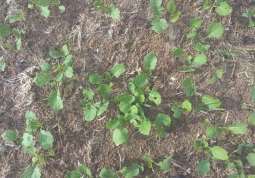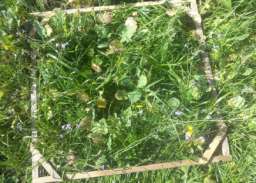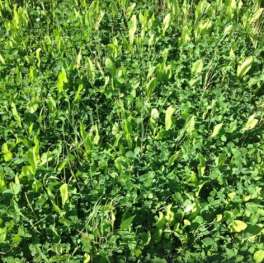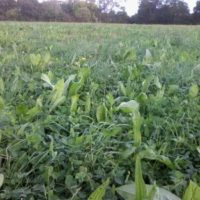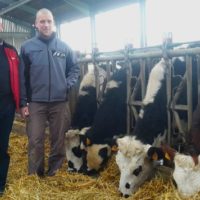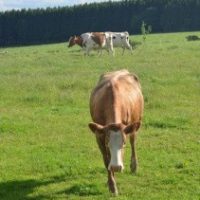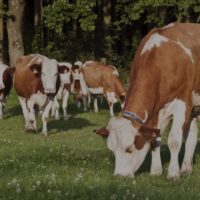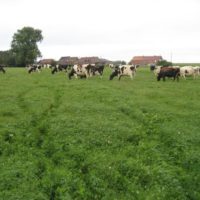Renovation of permanent grassland in the farm
Farm: “Gaec de la Basse Cour”
Location: Calvados, France
Case study
 Renovation of permanent grassland in the farm (.pdf)
Renovation of permanent grassland in the farm (.pdf)
Description
Background
This organic farm comprises:
- 137 dairy cows, 190 LU
- 175 ha of grassland, mainly permanent and 25 ha of crops
- 3 full time employees
The environment of the farm is based on:
- Medium clay for the soil
- Temperate and oceanic climate, due to the coast with an altitude of 30m
About grassland management:
Dominant meadow species (after renovation) :English Grass Ray, Tall Fescue, Meadow Fescue, Timothy, Purple Clover, Hybrid Clover, White Clover, Chicory and Plantain
Interculture composition (intermediate culture) : Fodder Rape, Italian Ray Grass, Diploid Oats, Oats and Radish Forage
Types of forage conservation :
- Hay (drying in barn)
- Wrappers
Detailed description
Organic system based on grassland system with conservation methods in hay (dried in barn) and wrapping. The goal is to graze with 70 ha accessible for cows.
Permanent renovation of permanent meadows (since 2015) with planting of a intermediate crop (intercropping) in the spring or autumn, which is pasture (5 pastures) and then destroyed for reseeding the permanent meadow (multi-species) to next spring, composed of English Rye Grass, Tall Fescue, Meadow Fescue, Timothy, Purple Clover, Hybrid Clover, White Clover, Chicory and Plantain.
Multi-species grassland seedlings in 4 stages : destruction of rotavator intercropping, 2 cover-crop passages, sowing of the meadow in the combined seedbed and 2 passes of cultipacker roller.
Results
This is a very successful technique for the moment, with a benefits from dairy production (especially during inter-crop grazing) and the presence of clover in the
permanent meadow thanks to spring sowing. This technique has been put in place to increase production and therefore products and reduce food costs.
Adoption criteria
Farmers start a program of renovation of permanent grasslands (after a trip to Finistère, Brittany) for a better production, especially in summer.
They pay attention in the renovation of meadows with the establishment of intercropping before the sowing of the meadow to clean the soil while maintaining good productivity.
They sow the meadow in the spring because it’s too wet in the fall.
The success is due to an optimal recovery of multi-species grasslands through barn drying.
Future prospects
Wishing to generalize this innovation to all the meadows to be renovated in order to improve as much as possible the food values of grazed meadows and distributed fodder.
This innovation can be disseminated to the means of:
- pasture promotion events, type “Prairiales”
- specialized websites
- exchange forums
The limits identified: the climate at the time of sowing, the absence of plowing which requires to mechanically destroy the cover of intercrops and the cost of seeds quite high in organic farming.
Additional information
| Farming system | organic farming |
|---|---|
| Main types of animal | dairy cattle |
| Country | |
| Product type | Case study |
| Language | |
| Main domain of innovation | |
| Climate | |
| Soil Type |

